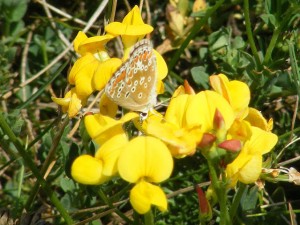In recent times, I have sadly neglected my once-weekly blogger round-up due to my very busy life since moving to Blois last October but three posts caught my eye recently that I would like to share. The first is Simply Sara Travel‘s method for selecting the perfect airbnb accommodation which I’m sure you’ll find helpful not only for Airbnb but also for home exchanges. The next is Experience France by Bike‘s excellent report on luggage transfer when cycling, particularly in the Loire Valley. The third is a very interesting history of New World vegetables in France – potatoes, tomatoes, aubergines, chillies and peppers – by Days on the Claise that I’m sure you’ll find fascinating. Enjoy!
My Method on How to Select the Perfect Airbnb Accommodations
by Simply Sara Travel, a girl from New Jersey who traded in her bagels for baguettes and moved to Paris. The aim of her blog is to inspire readers to travel, embrace a new culture, and open their minds to new perspectives.
 How people travel is shifting. With sites like Airbnb, more and more people are moving away from staying in traditional hotels and towards a more local experience of renting apartments/houses or shared spaces with residents. There are lots of pros to using Airbnb for lodging – it’s often less expensive than a hotel (especially when split among a larger party, and if there is a kitchen that allows self-servicing some meals) and allows for a more local-feeling experience. There’s a lot of great material already written on this – like Adventurous Kate’s How to Use Airbnb and Have a Great Experience for a detailed explanation of the site, or Expat Edna’s post on 6 Airbnb’s I Loved Around the World to give some inspiration on the cool places you could stay worldwide. Read more
How people travel is shifting. With sites like Airbnb, more and more people are moving away from staying in traditional hotels and towards a more local experience of renting apartments/houses or shared spaces with residents. There are lots of pros to using Airbnb for lodging – it’s often less expensive than a hotel (especially when split among a larger party, and if there is a kitchen that allows self-servicing some meals) and allows for a more local-feeling experience. There’s a lot of great material already written on this – like Adventurous Kate’s How to Use Airbnb and Have a Great Experience for a detailed explanation of the site, or Expat Edna’s post on 6 Airbnb’s I Loved Around the World to give some inspiration on the cool places you could stay worldwide. Read more
Luggage Transfer – A Great Bicycling Indulgence
by Maggie LaCoste from Experience France by Bike, an American who loves biking anywhere in Europe, but especially France, which has the perfect combination of safe bike routes, great food, great weather and history
 No matter how much you love bicycling in Europe, you’re probably not a big fan of carrying all your clothes in panniers. But for cyclotourists, panniers are a necessary evil, a small price to pay for complete independence on the road. Despite how carefully I choose every piece of clothing and technology that I pack, my panniers still end up weighing between 32-35 pounds, something I curse every time I go up a hill!
No matter how much you love bicycling in Europe, you’re probably not a big fan of carrying all your clothes in panniers. But for cyclotourists, panniers are a necessary evil, a small price to pay for complete independence on the road. Despite how carefully I choose every piece of clothing and technology that I pack, my panniers still end up weighing between 32-35 pounds, something I curse every time I go up a hill!
This summer, for the first time in 20+ years of bicycle touring, I used a luggage transfer service for 4 nights along the Mosel River. It was a fantastic indulgence, enabling us to easily bicycle the 200 km in 4 days with lots of stops during the day. Read more
Monsieur Parmentier versus Deadly Nightshade
by Susan from Days on the Claise, an Australian living in the south of the Loire Valley, writing about restoring an old house and the area and its history and running Loire Valley Time Travel.
 When potatoes and other New World members of the Solanaceae family (tomatoes, aubergines, chillies, peppers) were introduced to Europe they were treated with great suspicion. The intrepid explorers who brought them reported that the South American natives they encountered ate freely of these exotic plants.
When potatoes and other New World members of the Solanaceae family (tomatoes, aubergines, chillies, peppers) were introduced to Europe they were treated with great suspicion. The intrepid explorers who brought them reported that the South American natives they encountered ate freely of these exotic plants.
But French peasants weren’t convinced. These plants were clearly related to Henbane, Deadly Nightshade and worst of all, Mandrake. No one in their right mind would eat these dangerous plants, associated with witchcraft and capable of killing or sending you mad. Due to a curious twist of evolution, many Old World Solanums are amongst the most poisonous of all plants, but many New World Solanums are safe, nutritious and delicious. It’s true the New World species also contain some dubious compounds, but they are easily dealt with by simple everyday culinary techniques and pose no serious risk to consumers. Read more














